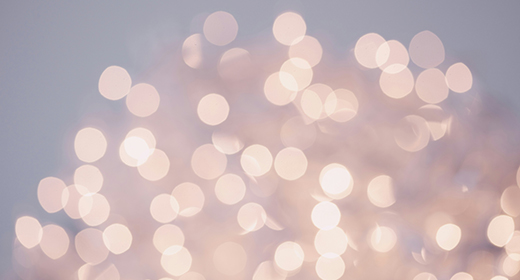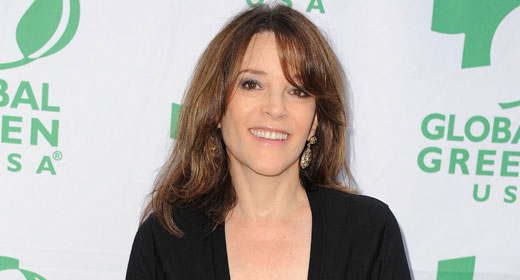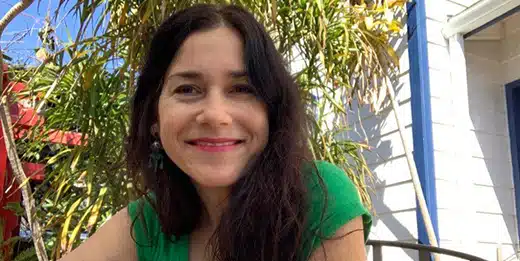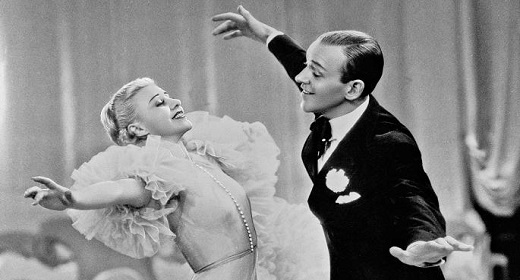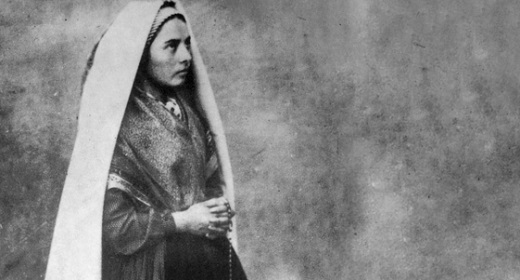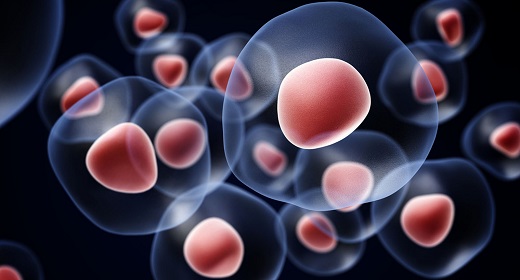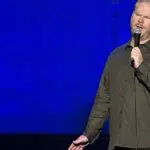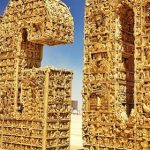by Dan Millman: Life is a Great School, and nature is the ultimate teacher, but without awareness you can’t hear the teacher.

Awareness transforms life’s lessons into wisdom; it can translate confusing circumstances and events into useful knowledge. Awareness, then, is the beginning of all learning. Learning is a response to a demand to grow do something you couldn’t do before. The process of reaming there fore naturally involves errors. Errors aren’t the problem; ignoring or misunderstanding them is. In order to correct an error, you must first be fully aware of it; then the error is inevitably going to be corrected.
The usual way of measuring how you are progressing in your sports activity is by observing the results. In other words, if you win the match, sink the putt, accomplish your goal, then every thing seems fine; but if the match is lost or the ball ends in the rough, you know something is wrong. Awareness can translate that “something” into specifics.
Most problems precisely defined
are already partially solved.—NARRY
If awareness were merely intellectual, then infants couldn’t learn. There is more to awareness than conceptual understanding. Awareness represents a kind of whole-body sensitivity arrived at through direct experience. Trying to learn a skill without total awareness is like trying to apply a stamp without adhesive it just won’t stick.
In life as well as in training, errors are always with us. We can say that learning a new skill is a process of refining errors to the point where they no longer hinder a desired goal. Errors exists even in our NASA space program, but they have been minimized to an almost invisible level of tolerance. Even the “perfect 10.00” routines of Olympic gymnasts contain errors, but they are small enough to be considered irrelevant. Smaller errors make the expert.
It’s desirable, of course, to be aware of strengths as well as weaknesses. Awareness of our strong points brings confidence, inspiration, motivation, and satisfaction. Only awareness of our weaknesses, however, allows us to strengthen our weak links and improve consistently.
Awareness Disillusion, and Success
Awareness heals, but it isn’t always pleasant. On the contrary, the growth of awareness can feel like a disillusioning process. During my first few months of Aikido training I became quite disillusioned. The flowing martial art of Aikido requires relaxation-in-movement even while under attack. In the face of this demand for relaxation, I began to notice a great deal of tension in my shoulders. At first I thought that Aikido was “making me” tense, but I gradually realized that I was only becoming aware, for the first time, of tension I had always carried.
Freshmen on the Stanford gymnastics team going through this process of insight, awareness, and disillusion, would sometimes feel frustrated and tell me, their coach, how they “used to be better in high school” and how they were “going downhill.”
This concerned me until I saw films of them from the year before, and it was obvious that they had improved radically. They had simply raised their standards and were more aware of errors than they were the previous year.
One sure sign of growing awareness is that you feel as if you are worse.” Awareness in sport, in relationships, in any learning often entails a momentary drop in self-esteem, a dent in our self-image. Because of built-in defense mechanisms, therefore, most of us have a tendency to resist awareness.
It is important to understand and account for this internal resistance to awareness so that you can avoid the discouragement and frustration that has caused some athletes to quit a sport just when they are beginning to become proficient because they imagine that they are “getting worse.”
Whole-Body Awareness
Most athletes have the courage to see and overcome physical errors, so that one aspect of themselves is developed. The way of the inner athlete, however, is to increase awareness of weaknesses in body, mind, and emotions. To do so we have to be willing to lose face, to see ourselves momentarily in a light that is less flattering than we would wish. We all have mental and emotional as well as physical traits from childhood that are maladaptive, immature, and downright silly. In most people these traits remain hidden from their own awareness, only to surface momentarily in times of upset, pressure, or crisis. Awareness is like sunlight over a dark well. We don’t see the little demons lurking there until the light of awareness shines directly overhead; then we notice all these undeveloped qualities in ourselves and gain both humility and compassion.
If we resist seeing physical weaknesses a little, we resist awareness of mental and emotional weaknesses a lot. There are two very good reasons for this: First, it’s easier to see physical errors. The results are on a gross level, right in front of us. If we’re missing the baseball, for example, it’s pretty obvious that we’re making an error. Emotional and mental weaknesses are more subtle, harder to discern. Second, we identify more with our minds and emotions than we do with our bodies. What we identify with, we tend to defend. We defend our self-image, our loved ones, our values much more ferociously than we defend those things we consider separate from ourselves.
I once saw in a magazine a cartoon showing a man push in a small cart with frozen ice cream inside. He stood listening to a speaker on a platform who was sermonizing to a small crowd. The ice-cream vendor’s face showed increasing interest and agreement as the speaker said, “Down with Fascism! . . . Down with Communism! . . . down with big government! Down with politicians!” Suddenly the vendor’s face grew sour, and he walked off, offended, muttering under his breath. It seems the speaker had added, “Down with ice cream!”
You may doubt the fact that we identify with (and defend more intensely) our minds and emotions than our bodies, but do you notice how people feel less awkward talking about their physical illnesses than about an emotional or mental problem? If you tell an athlete he looks clumsy on a particular occasion, he might be a little upset, but if you tell him he appears to be stupid or immature (displaying mental or emotional weaknesses), he’s far more likely to be upset or defensive. This defensiveness is the primary mechanism of resisting awareness of errors. The natural athlete cannot allow himself such defensiveness; it’s too heavy a burden to carry if he is to become light and free.
If you are to become the natural athlete, aligned with the natural laws, you must bring nonresistance to awareness. Acute observation will detect the weaknesses, cut through illusion, and transform your errors into whole-body awareness . . . and power. Hidden weaknesses surface in the heat of competition and training, so the athletic arena has tremendous potential for whole-body development.
In understanding our built-in tendency to resist detecting our own foibles and weaknesses, we can see why the process of learning isn’t simple for adults. Children, on the other hand, as residents of an adult world, are used to losing face; making errors is a major part of their lives. Most of what infants do is make errors. They wet their pants, fall over, drop things. Yet they have nothing to resist, so the progression of awareness-practice-correction is natural to them. If it were so for us, learning would accelerate rapidly.
What happens to most of us in our athletic endeavors is that we’re “sort of” aware of what we’re doing wrong, and we “sort of” try for a while to correct it. Often, however, we feel momentarily worse when we try to make corrections based on confused awareness, so we tend to go back to whatever habit patterns we’ve been accustomed to.
It’s often easier to stay confused. One athlete under the authoritarian rule of an abusive coach who was literally running him into the ground described to me yet another in a long line of injuries. When I asked him why he didn’t find another coach, he replied with a sigh, “Well, at least I’m used to him.”
In sports, relationships, and other aspects of daily life, we often get stuck in old habits for the same reason – at least we’re used to them. The less flexible we are, the less willing to take risks, the more likely we are to remain stuck in old habits that no longer serve us. Sometimes it takes physical or emotional pain to generate the awareness and action necessary to change.
Then the time came
when the risk it took
to remain tight in a bud
was more painful than the risk it took
to blossom.—ANAIS NIN
The Growth of Awareness
Awareness, like everything else, is subject to the natural laws. It happens not all at once but in a natural order, from gross to subtle. Your growth in awareness is similar to self sculpture. First you determine the shape you want to bring out of a stone (your goal). Then you begin hacking and hewing. This “rough cutting” is your general awareness. Later you are ready for the detail work and polishing—the most subtle awareness.
An example of gross awareness is noticing that you sometimes fall down accidentally or that you tend to have an explosive temper and hit people, or that you often become distracted and forget where you are. An example of subtle awareness is the close attention that the diver pays to the position of his hands and fingers even during a triple somersault, or the control of internal organs some yogis have mastered.
A Japanese story illustrates the respect for refined awareness common in some Eastern cultures.
An old samurai warrior knew his time on earth was near an end and wished to bequeath his sword to the brightest of his three sons. He designed a test.
He had a friend hide just inside the barn, above the doorway, and gave him three bags of rice. He then invited each son inside, one at a time.
The first son, after feeling the rice bag fall on his head, drew his sword and cut the bag in half before it hit the ground.
The second son halved the bag even before it hit his head.
The third son, sensing something amiss, declined to enter the barn-and so earned his father’s sword.
We can say that beginners are those who have not refined their awareness of errors relative to a particular skill. In this sense, we are all beginners, for no matter what we’ve accomplished, there are always new refinements for which we haven’t yet developed subtle awareness. In our journey up the mountain, we’re all beginners in new territory.
The Margaret Analogy
At Oberlin College, I once had the pleasure of coaching a dedicated diver named Margaret. Her progressive growth of awareness in learning a particular dive parallels the stages we all go through in training in daily life.
After her first diving attempt, she had no awareness of what she had done wrong and had to rely entirely on my feedback.
After several attempts, she could tell me what she had done incorrectly after the dive was finished and the errors had been made.
Before long she was becoming aware of her errors during the dive.
Finally, in one attempt, her awareness was integrated with body, mind, and emotions before the dive, and the errors were corrected before they were made. The dive was beautiful.
This example has profound implications for daily life, because we go through the same process in all kinds of learning situations.
There is a great difference between recognizing an error, which comes after a simple explanation, and accepting an error as an error acceptance that implies full responsibility for correcting that error. Full awareness implies willingness to change, and we may not be ready to do that. An example is a young woman on a gymnastics team who was overweight. She recognized that she needed to lose her extra fat. She could see it in a mirror. Yet it took her one full year to become fully aware of this weakness as an error. For a long time she had resisted recognizing what was obvious to her friends in the same way alcoholics may go for years without recognizing the obvious.
In athletics or daily life, then, a habitual error must be felt, not merely acknowledged verbally, before the person making that error will generate the motivational impulse to change.
I had a friend named Roger who never stopped talking; maybe he even talked in his sleep. He knew that he was a marathon talker – in fact, it was one of his favorite topics of conversation. Yet Roger did not see his habit as an error that was driving his friends away.
Most of Roger’s acquaintances, wanting to be tolerant, never told him that he was an outright bore. One day at a party, in the middle of one of his favorite monologues, a young woman told him he was “deadly boring.” She told him that it was impossible to have a dialogue with him and pointed out how people walked away as he approached.
At first Roger was very upset. He had lost face. Before long he began to notice his talking sprees as an error – after they had ended. within a few weeks he had begun to notice his compulsive verbalizing as he was talking. (In fact, it began to seem that his endless talk was getting worse than ever.) Eventually, Roger remembered to quell his talks before he got going. He became a good listener – and, just as in fiction, he ended up marrying the candid young woman.
As Roger learned to control his mouth, we can all learn to control our bodies. Awareness is the key, the ability to hear the lessons all around us.
Teachers who understand the progressive growth of awareness need never be impatient with their students, because a wise teacher realizes that telling students of their errors is a limited form of communication, addressed only to their minds. It takes longer for full awareness to pervade all three centers, thus giving us the emotional impulse, mental clarity, and physical ability to change.
That is how awareness grows in the diver, skier, cellist, pool shooter, golfer, potter . . . and you. Realizing the natural growth of awareness allows you to be your own gentle teacher. Give yourself sufficient time in which to learn.
Feedback Aids to Awareness
We’ve all run into a situation in which we know that we’re making an error but don’t know what it is. In situations like this, it saves time to use an aid to awareness. The following are helpful aids.
The Other Students. The errors and successes of other athletes can serve as lessons and as inspiration.
Students less skilled than you remind you of your own progress. When you observe these beginners improving just as you did, you understand that you can also continue to improve.
Students who are more advanced than you are can serve as examples to copy. Learning from example is the way infants learn—and probably the most natural way to learn. Advanced athletes can inspire you by showing that highlevel skills are accessible to us all.
Visual Feedback Nothing serves the growth of awareness so instantly and so well as seeing a film or videotape of your own movements. Even a mirror can help you become realistic about your strengths and weaknesses.
The Teacher. The videotape or film can show you what you look like, but only the teacher can pinpoint the specific errors you are making in order of priority. The teacher is an intelligent feedback aid who can analyze and communicate information about errors and the ways to correct them.
The teacher has journeyed further up the mountain than you have and can show you how to avoid some of the pitfalls on the path. Throughout history, the teacher has been one of the best sources of feedback in the growth of awareness.
Exaggeration. If you have no access to films or teachers or videotapes and want a shortcut to awareness, then all you have to do is deliberately exaggerate your errors. If you are slicing your golf ball or continually falling in one direction, do it even worse—on purpose. This serves two purposes: First, the error becomes obvious, and your awareness grows instantly. Second, your errors become conscious, deliberate, and controlled instead of unconscious. They thus become far easier to correct.
Some teachers advocate letting yourself make errors, to cultivate patience and be free from self-criticism. This technique is helpful. But in going beyond this and deliberately repeating the error consciously, you will soon find yourself free of it.Deliberate error is no longer an error.

